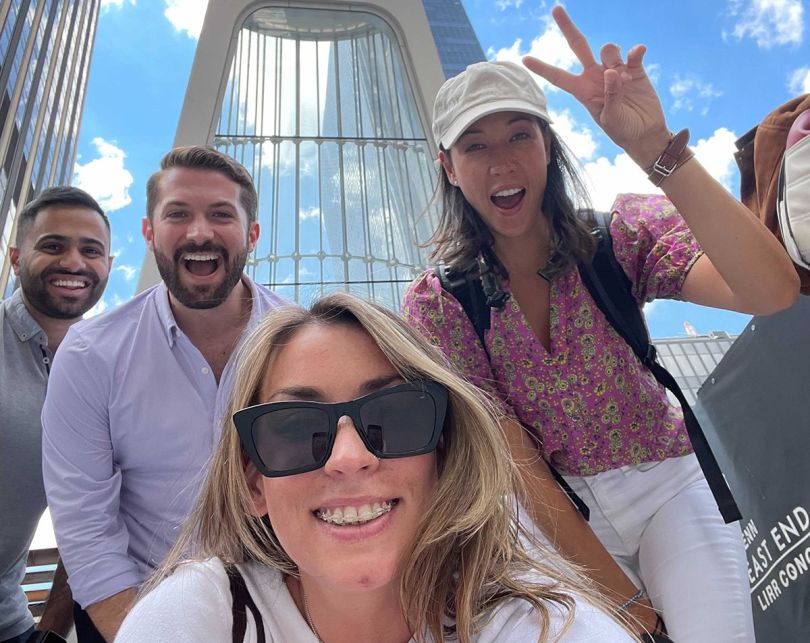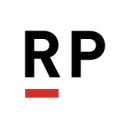“Culture is a fuzzy buzzword, and often overused,” said Cutover Head of People Filipe Martins.
Martins is right. When someone says the word “culture,” especially in the context of work, they could mean a dozen different things. Yet if having a good company culture is important for attracting and retaining top talent, what does the phrase actually mean?
That answer is different for every organization, for one simple reason: Company culture is built through its people. What constitutes a good culture for one group might be radically different from another. If a leader wants to create a culture that works for their company, they need to listen to their people first and build the culture accordingly. But how is this achieved?
Employee engagement platform Achievers reported that 58 percent of employees wish that engagement surveys were done more frequently, and being aligned with company values is a primary predictor of employee engagement. Notably, the vast majority of the burden is on managers, who Achievers reported were responsible for 70 percent of variance in engagement.
“The crux of culture,” added Martins, “boils down to employees’ experiences at the individual level, influenced by the tone set by leaders’ actions.”
Built In NYC sat down with Martins and leaders from six other New York companies that use a combination of tools — from anonymous pulse surveys to round table discussions — to improve the quality of life at work. There’s no one right way to have a good culture, but by listening to their team, managers can build the culture that’s right for their people.

What are some ways that you solicit feedback or input from employees regarding the company culture?
As a baseline, we run engagement surveys to help us capture feedback at a team and departmental level. Most companies do this — it’s become a must-have. Keeping the data alive and meaningful, with enough regularity without becoming overkill, keeps it authentic as opposed to a tick-box. More importantly, we rely on leaders leading by example when it comes to company culture.
Every interaction is an opportunity for feedback. It’s often in the less-seen aspects of employee experience where we can get meaningful feedback on culture. We might have great parental policies, for example, but do parents feel comfortable taking advantage of them? When employees raise concerns, do we look at it beyond the case at hand? Yes, we do — we look at the whole team systemically.
Feedback and input from employees is not a static process to put up on a slide deck to show percentages. It’s the small interactions that matter — and if we don’t consider that as data, we’re not doing our job right.
When it comes to feedback, how do you ensure all voices are heard and valued equitably?
We established our guiding principles early on in our company journey. These are: Lead with empathy, assume positive intent, stay curious and enable others to succeed. “Assume positive intent” has guided my onboarding experience at Cutover so far. As a new leader in the organization, assuming positive intent allowed me to navigate the company and its culture and avoid imposing my own ideas without respecting what’s already in place. In doing so, I’ve felt included — and it’s made me be inclusive of others.
At a company-wide level, we are developing our approach to equity, diversity and inclusion as we grow. We’ve prioritized action over words, starting small to create momentum rather than going big and underachieving. To this end, we’ve launched our first Employee Resource Group (ERG), Cutover Pride, which focuses on the queer community. We’re showcasing our guiding principles as we go about the group’s launch by learning together — for example, organizing one talk per month with leaders in the company to share their own experiences and inspire our Cutovians. We’re hopeful that we can widen our reach and impact as we keep going, potentially by creating other ERGs!
Feedback and input from employees is not a static process to put up on a slide deck to show percentages. It’s the small interactions that matter.”
Share an example of a time that you used employee feedback to inform your approach to culture-building.
During Winter 2020, with the pandemic at its peak and many schools closed for an extended period of time, we gathered feedback from many Cutover parents that clearly indicated they — and their loved ones at home — were struggling. While we had a pre-existing relationship with our online therapy partner, The Circle Line, which enabled all employees to access unlimited therapy sessions at zero cost, we realized that we needed to go further.
Many of our Cutover parents were struggling due to the negative mental health impact the pandemic was having on their loved ones, who did not have access to the same therapy support as Cutover employees. We recognised this as an opportunity to bring our “lead with empathy” value to life, so we refactored budgets to ensure that any Cutover employee could add a loved one to The Circle Line’s services — granting them access to unlimited free therapy sessions as if they were an employee. To date, dozens of our team’s family members have made use of our free therapy offering. We’re proud to have been able to react quickly to employee feedback to enable us to support our team and their families during unprecedented times.

What are some ways that you solicit feedback or input from employees regarding the company culture?
At Known, everything we do starts with science — we’re setting out to prove that culture can be measured. Our employees are given the opportunity to offer feedback on a bi-annual basis through our Knowner experience survey, which is an exhaustive tool used to examine our employees’ experiences and assess the health of our core values.
While surveys can be impactful, we believe a deeper look can elevate our understanding in even more dynamic ways. So, we facilitate what we call culture canvas sessions. Bi-annually, we invite 10 percent of our employees of varying demographics from all parts of the business to participate.
Leveraging a methodology from Aaron Dignan’s book, Brave New Work, we use a tool called an OS canvas to surface the current bright spots and tensions in our culture. The goal is to identify key impact areas for further investment. With lo-fi jams, virtual post-it notes and timed exercises, we surface insights and facilitate constructive conversations that turn this gathering of information into a rewarding team building experience. In that sense, it serves two purposes and helps participants see just how embedded and interconnected their ways of working really are.
When it comes to feedback, how do you ensure all voices are heard and valued equitably?
Our culture and experience team has a set of guiding policies that serve as our guardrails for facilitating feedback.
These guiding policies lead the way in our listening tours, culture sessions and surveys and in how we share back to the organization what we learned and what areas we’ll focus on next.
At times, ensuring employees feel comfortable using their voice requires a trusted third party. This year we partnered with Assemble HR, to host “Let’s Talk” roundtables for employees to explore how we might continue to nurture an inclusive environment
Known’s Guiding Policies for Feedback:
- Values forward: One team; see the good; never stop learning; there’s always a better way.
- One team, every voice: “Every Knowner is an equity partner in our culture.”
- Get real, and get it right: “Culture grows in the direction of what we practice, promote and permit.”
Share an example of a time that you used employee feedback to inform your approach to culture-building.
Companies are often criticized for having values that are just words on a wall, and rightly so — core values mean nothing if they aren’t known, animated and practiced. There was a time when Known’s core values were not known as they are today.
Known was formed in February 2020, when Schireson Associates acquired Stun Creative and Blackbird. Two weeks later, the world shut down due to COVID-19. We pivoted, innovated and charged full steam ahead, determined to protect our new business and our most valuable asset, our people. The urgency and relevance of our services made Known, even in our short existence, the most in-demand agency in the industry.
At one point, however, we conducted listening tours and learned through feedback that there was a disconnect between our employees and our values. Few employees even knew what they were.
We responded by creating a program called Known for Culture, which onboarded everyone into our values. This program is now the first learning and engagement experience in a new employee’s journey at Known. Each month new hires come together and deep dive into our core values to discuss what they mean, how they impact our behaviors and why they matter.

What are some ways that you solicit feedback or input from employees regarding the company culture?
One of the primary ways we solicit feedback is through pulse surveys. Traditionally, companies release a survey with various questions related to the business once or twice a year. However, while this provides a snapshot of employee sentiment, it’s specific to feelings during that particular date — and can be manipulated by launching after a positive event or postponing following a negative event.
At Ontra, we pulse everyone weekly by releasing three random questions from our pulse question bank via Slack. This allows us to see snapshots of employee sentiment on a regular basis throughout the year. And because we’ve integrated Lattice with Slack, the answers feed directly into our system so we can monitor responses as they come in. We’ve also integrated Lattice with our human resource information system (HRIS) which allows us to double click even further into each question to pull up heat maps by department, gender, orientation, race and so on. This enables us to identify if issues or concerns are disproportionately affecting a specific group or if they’re felt across the organization. Either way, we have enough data to more precisely repair issues the instant they begin to hit the pulse.
When it comes to feedback, how do you ensure all voices are heard and valued equitably?
As much as we can, we give the option for feedback to be truly anonymous so that no one feels intimidated to speak up. More specifically, we also ensure that the spaces created for affinity groups are not policed by a member of HR or leadership — though they are of course welcome as part of that group as an identifying member. Our intent is to give employees a safe place to come together as a community so they can talk about anything without feeling anxious and provide them with comfort in numbers should they decide to raise their hands about difficult issues.
We are also incorporating non-traditional avenues to implement micro experiences, which are often overlooked but over time can quietly seed an inclusive culture. While we will remain a hybrid workforce, we want to ensure everyone that chooses to go into an office feels seen and represented. Currently, we are examining ways to use physical space to create inclusive environments for everyone beyond simply providing a mother’s room. Is there a place for prayer? Are there kosher foods and dishes? Do we have options for vegetarians or employees with a nut allergy? No idea is too small for consideration.
Our intent is to give employees a safe place to come together as a community so they can talk about anything without feeling anxious.”
Share an example of a time that you used employee feedback to inform your approach to culture-building.
Recent pulse feedback indicated one of our biggest opportunities for improvement is related to total rewards — specifically around helping employees better understand the equity component of their compensation. Ontra uses objectives and key results (OKRs) as our goal-setting methodology, so we dedicated one of the people team’s objectives to raising the pulse score in this category.
We supplemented the objective with initiatives built to address the concern. For example, we are designing a deep dive course around equity education, entirely because of feedback from our employees. This course will be shared through OntraU, our internal learning and development program, with the option to attend in-person or run through on-demand. We lean heavily into pillars of adult learning in an effort to help simplify this complex topic. We also make our team available for 1:1 or office hours in case employees are more comfortable asking questions in a smaller setting. The end goal is to see an improvement in the total rewards score in the pulse survey following the launch of the course.

What are some ways that you solicit feedback or input from employees regarding the company culture?
Here at Rightpoint (RP), we foster a transparent and inclusive environment where team members are challenged, inspired, have fun and thrive. We achieve this through initiatives that aim to align team members with the RP’s common goals and vision while equipping people with information and resources to help them excel, both professionally and personally.
First, we have bi-weekly company meetings. These calls are part of our ongoing communication strategy, in which we provide regular and transparent business updates and promote other timely internal content with all team members. Not only are these calls informative, but we make it a point to focus on great work happening across the company, as well as make space for team members to ask questions about the business in real-time.
Also, we have our People Pulse engagement survey. We believe that truly great organizations seek ways to grow based on team members’ feedback. People Pulse is our long-standing annual engagement survey that we rely on to hear the collective voice of our team members and get better understanding of the RP work experience so we can target immediate areas we can improve on, as well as develop long-term goals going forward.
When it comes to feedback, how do you ensure all voices are heard and valued equitably?
DEI is a strategic pillar of Rightpoint strategy. Our mission is to make RP a more diverse, equitable and inclusive organization to bring about meaningful and measurable changes to representation, team member experience and client engagement. We’ve developed DEI-specific company goals to help us measure what matters most and ensure accountability and advancement. Our goals are focused on talent acquisition, team member experience, training and client interaction.
RP’s employee resource groups are created and run by team members who share a common community, identity or allyship. Right now, RP ERGs include Parents, Pride, POC and Womxn — these groups play a vital role in contributing to Rightpoint’s inclusive environment where all are valued and empowered to succeed.
We also have a number of team member engagement and learning opportunities that target DEI topics — topics include workplace diversity, sensitivity and inclusion, microaggressions in the workplace, and unconscious bias. We provide education through DEI events and external guest speakers, and have open forums for our team members to come together in an open and trusting environment to connect, talk about sensitive issues, listen and learn from one another.
We believe that truly great organizations seek ways to grow based on team members’ feedback.”
Share an example of a time that you used employee feedback to inform your approach to culture-building.
Based on our 2021 People Pulse survey, the majority of RP team members believed that the quantity of meetings they were attending were too high in volume and inefficient. 50 percent of people reported regularly multi-tasking through most meetings on unrelated items, and 73 percent reported that they feel they would benefit from a time block protected from internal meetings.
Based on this feedback, RP leadership has spent time developing new meeting guidance for team members to help them with time management, burnout and overall well-being. New guidance includes details and policies around meeting-free days, video-free days, a “virtual commute” block and other best practices and tips for setting boundaries and expectations with colleagues and clients in a virtual work environment.
What are some ways that you solicit feedback or input from employees regarding the company culture?
We regularly utilize two feedback tools to check in on overall employee engagement and burnout: Our biannual employee engagement survey and a weekly employee pulse via Slack. While the engagement survey acts as our most in-depth employee feedback tool and our foundation for action planning, our employee pulse survey is a way to gain more immediate feedback from our team. We also use Google Surveys as necessary for specialized topics where we would like employee input, such as learning and development, employee wellness or office usage.
When it comes to feedback, how do you ensure all voices are heard and valued equitably?
In addition to anonymized employee engagement surveys and weekly employee pulses, we launched ERGs in January, driven by our employee-led DEI Taskforce. Our ERGs serve as another opportunity to maximize the voices and development of underrepresented groups — and drive organizational initiatives to build awareness, provide support and celebrate these groups.
This feedback and our future-of-work philosophy help us build towards being our most mentally healthy and highest-performing organization ever.”
Share an example of a time that you used employee feedback to inform your approach to culture-building.
As we crafted our future-of-work philosophy and next steps in a post-Covid world, we directly relied on employee feedback to inform how we would move forward as an organization. Our employees told us retaining the flexibility experienced during remote work was important in maintaining their ongoing mental health and wellbeing.
Based on their feedback and supporting research, we ultimately landed on a framework focused on employee flexibility and impact. This feedback and our future-of-work philosophy help us build towards being our most mentally healthy and highest-performing organization ever.
What are some ways that you solicit feedback or input from employees regarding the company culture?
We utilize multiple pathways to invite employee feedback, relying on data trends and internal and external benchmarking in bi-annual anonymous engagement surveys that explore company culture. We also participate in quarterly pulse checks, which provide a more focused feedback channel and have been useful throughout the pandemic to ensure we’re providing the right level of targeted employee support. Additionally, we layer data relevant to employee experience and culture from different channels — employee engagement surveys, pulse checks, DEI-led focus groups, HRBP-hosted “stay interviews,” exit interviews and so on — to derive additional insights that help us continue to shape and evolve our culture in a way that resonates with our employees. Aside from platforms that track specific data and trends, members of our leadership team have also been known to go on occasional listening tours with a casual, conversational approach that fosters authentic dialogue and connection building opportunity.
When it comes to feedback, how do you ensure all voices are heard and valued equitably?
BCG DV ensures that there are a variety of feedback opportunities using both attributed and anonymous feedback. Anonymous channels include employee engagement surveys, pulse checks and weekly team-health check-in surveys. Intentionally anonymous feedback helps people feel safe sharing their honest and unguarded perspectives.
Attributed feedback is shared via events like Brave Space dialogues, ERG focus groups hosted by our DEI manager and regular check-ins hosted by our HR business partners. For example, we partner closely with our ERG leaders — who identify as people of color, womxn, parents or caregivers — to share what is and is not working for their ERG members. This helps us not only find synergies across ERGs so that we can expand awareness and inclusive culture building opportunities, but also helps us foster greater understanding and allyship.
We continuously monitor employee experience at BCG DV, but also their human experience in the world. In the last few years, we’ve taken steps to ensure that employees whose communities are impacted by world events are given dedicated space to feel seen and heard.
In the last few years, we’ve taken steps to ensure that employees whose communities are impacted by world events are given dedicated space to feel seen and heard.”
Share an example of a time that you used employee feedback to inform your approach to culture-building.
An example of action driven by employee feedback comes from input we received from our Black Employee Network (BEN) ERG members. BEN members provided positive feedback around a career advocacy navigation workshop, which led to us kicking off a Brij the Gap career development pilot for associates, seniors and leads in our ERGs. The pilot served as a development and group coaching program for folks historically underrepresented in tech and provided skills to develop their brand and network of shared experiences.
Another example of feedback driven action stemmed from a clear desire — shared in engagement survey verbatims — for some of our employees to build in-person connection with fellow colleagues. As a result, we encouraged and paid for small group affiliation and culture-building events led by interested employees — abiding to their comfort level, interests and local Covid-19 regulations.
With a 2022 focus on culture-building through ERG community growth as well as North America wide affiliation and learning events, we are identifying and scheduling opportunities that further build employee connection.

What are some ways that you solicit feedback or input from employees regarding the company culture?
At Papier, one of our core values is communication — we believe this goes hand in hand with a feedback culture.
Since last summer, we’ve been running a monthly employee engagement survey to measure our net promoter score (NPS) and responses to a bunch of different drivers on important workplace factors. It’s been great to see that our NPS is high — usually around 50-65 — as this supports our impression that employee morale and engagement is at a good level. This is particularly important during hybrid working, when it could be easy to lose touch with how remote employees are feeling.
We also love a standalone survey on particular subject matters, such as when we adapted our working patterns in the office as a response to Covid-19. When we were asking people to return to the office for the first time, we surveyed regularly to take a temperature read on how comfortable our Paps were feeling.
When it comes to our new joiners, we collect feedback to make sure we’re doing the best job we can with onboarding and induction. We do a six-week check-in interview with our People Executive, and then after the new hire has been with us for three months we send an anonymous survey to collect quantitative feedback.
When it comes to feedback, how do you ensure all voices are heard and valued equitably?
The benefit of our anonymous employee engagement survey is that it gives our employees a safe space for leaving objective, meaningful feedback and ensures that everyone has a voice. We also have a very open feedback culture, so employees are encouraged to contact our people director or CEO or their line manager at any time via Slack if they are experiencing any issue or want to share feedback. We’ve recently expanded on this by setting up an anonymous “ask me anything” segment where employees can submit questions for our CEO which are then answered every month at our monthly town hall.
In order to make sure that we are amplifying minority voices and creating an equitable workplace at Papier, we have put together a diversity committee to work with myself and Papier’s leadership team on our diversity strategy and other initiatives — and most importantly, to provide feedback on Papier’s culture and hold us accountable when it comes to creating the welcoming and inclusive environment we’re aiming for.
Employees are encouraged to contact our people director or CEO or their line manager at any time via Slack if they are experiencing any issue or want to share feedback.”
Share an example of a time that you used employee feedback to inform your approach to culture-building.
The main thing we’ve changed at Papier in the last six months in response to employee feedback is to do a review of our reward and benefits package. As a start-up, we have had to iterate quickly on this to make sure we’re keeping up with the market, but it was also really important to us to give our Paps a generous and supportive benefits package — one that caters to a wide range of people, life-stages and interests.
The feedback in the UK was that our pension contribution was confusing and that our UK Paps wanted private healthcare. In response to this, last fall we increased our UK pension contributions — and have matched this in the US with our 401k — and we introduced private medical so our UK Paps have the same offering as our US ones. To encourage more social responsibility, we also introduced two days paid volunteering per year. A number of our Paps are trustees of charities, volunteer their time as school governors, or have charitable interests they feel strongly about. Rather than people having to take holiday to work on these causes, we wanted to support our people with paid volunteering time.



















